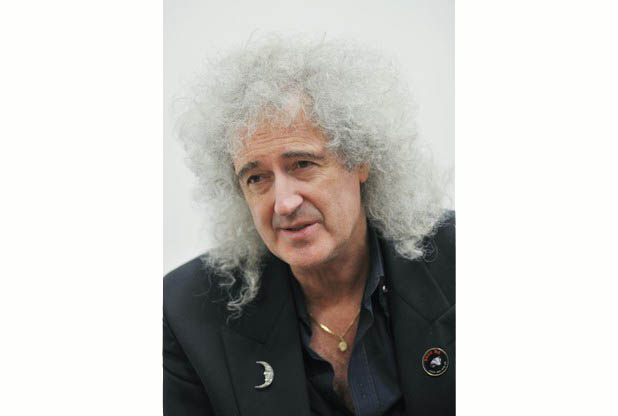
LEICESTER MERCURY
6 December 2013 by PA Warzynski
The Queen guitarist, who studied for a phD in interplanetary science in 2007, has been one of the millions of astronomers from across the globe who has been watching the comet since its discovery in September 2012. On November 28, it passed within 1.2 million km of the Sun and was heated to temperatures hot enough to melt iron ts icy and dusty nucleus – made up of carbon dioxide and cyanogen, which gave it a green glow – exploded due to the 2,000C heat and the gravitational pull of the star, leaving nothing but a large dust cloud. Despite the massive global attention, mysteries still remain about the exact size, shape and fate of the satellite.
Now, Dr May, who has appeared on the Sky at Night, with Patrick Moore, has given his thoughts on what happened to the comet. Speaking to the Mercury, he said: “My theory is that it was peanut shaped because you could see a lot of shadow on the tail. No one got close enough to see it properly, but I image it looked something [like] Itokawa (an asteroid discovered in 1998). “I watched Ison’s demise on the Nasa Soho website, it was all very exciting. It must have exploded though, judging by dispersal of the gases and debris.”
The large dust cloud left by the comet continued to travel at great speed and will cross Earth’s path early next year. Astronomers will be looking to the heavens on January 14, as the remains of the comet pass close to Earth, but no one knows if anything will be left.
Dr May said: “I don’t think we’re going to get to see it again, even as a cloud of dust, because it would have dispersed too much. But then, what do I know, someone is bound to come along and prove me wrong.”
Ison originated in the Oort Cloud, a collection of icy comets and asteroids, on the edge of the solar system.
Another stargazer, who has been keenly tracking the comet’s progress is, Dr John Bridges, from the University of Leicester. He said the comet’s remnants might be visible, but it was too early to tell.
“I think it will probably only be visible with binoculars,” he said. “If that I’m afraid. It seems to have fallen apart as it passed relatively close to the Sun. Because of its close passage to the star, it is known as a sun-grazer.”
Nasa has said that 90 per cent of Ison was destroyed when it passed the Sun, but the space agency continues to study the comet to determine exactly what happened to it. It said that there might be part of the nucleus left – judging by what has happened to previous comets. On its website, it said: “We will monitor the comet for the next several weeks. If there is nothing sizable and stable left, it will dissipate and disappear in this time, as already emitted dust leaves the vicinity. If there is still a central source of emission, even if it is very much smaller, we will see a new, much fainter coma and tail form, which currently may be overwhelmed by the dust emitted from before the disruption event.”
Dr Bridges, who has been working with Nasa on its Mars Curiosity project, will be at the University of Leicester on Wednesday, January 8, hosting an event dedicated to studying the wonders of the universe.
Stargazing Live 2014, is a free event which includes a series of talks and lectures about the cosmos, given by leading experts at the university. Tickets to the event can be bought at www.le.ac.uk/stargazinglive until Monday, December 16.